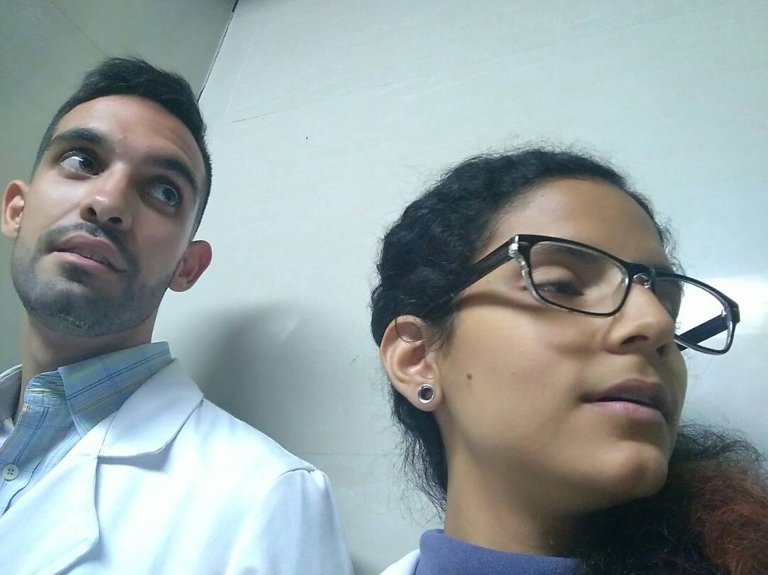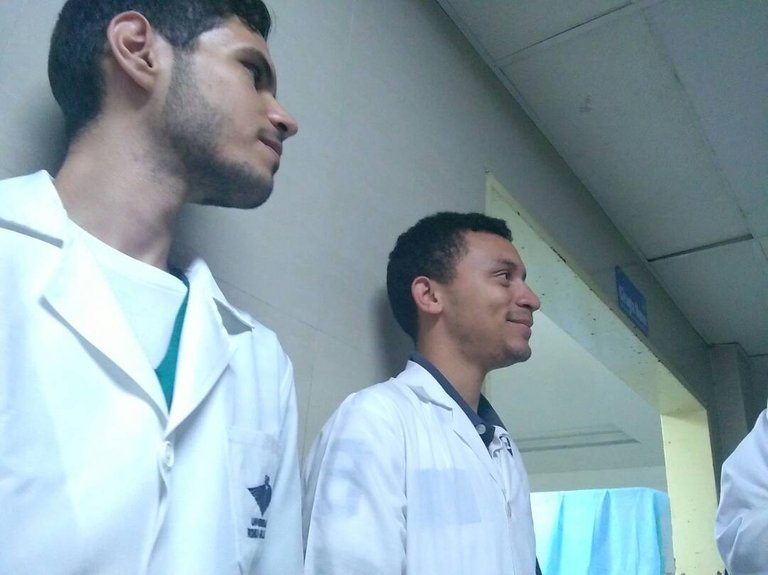Anion Gap: the terror of undergraduate students.
Mathematics and biochemistry tend to come together to explain those physiological phenomena that few of us like to study. Whether we are specialists, general practitioners, nurses, bioanalysts or undergraduate students…
We have all suffered when studying Hydroelectrolytic Disorders.

In fact...

... this is the face of the majority...

... when hearing...

... 'bout the Anionic Gap.
But the truth is that this subject should not be a monster from which we must flee, but rather find beauty (and art) by considering such a complex system in total functionality in all stages of our biological lives.

Source: Pixabay Free for commercial use
And everything begins when one understands its importance:
When applying the GAP formula, we can determine the physio(patho)logic values of hydroelectrolytic plasma relationships in components such as Sodium (major plasma cation) and Chlorine and Bicarbonate (major anions of the extracellular fluid). This calculation will allow us to evaluate a possible disorder in the acid-base balance through the knowledge of blood acidity.
The formula
By definition, we could say that the plasma Anionic Gap (pAG) is "the result of the mathematical difference between the major cation of the plasma, sodium, and the major anions that accompany it in the extracellular fluid: chlorine, and bicarbonate."
Concept from which we can start to establish its formula as:
pAG = [Na +] - [Cl- + HCO3-]
Being their physiological (normal) values:
pAG = 12 mEq / l (8-16 mEq / l).
There is a variant with little clinical application in which the Potassium value is also included:
pAG = [(Na+) + (K+)] - [(Cl-) + (HCO3-)]
But, without branching out, by having the initial formula and its reference values we can make applications that facilitate their understanding through the Law of Electronaturality of the Body Liquids, which says that "in each aqueous compartment of the organism, the liquids are electrically neutral"; this means that, in terms of physiological electronaturality, the sum of anions (A-) is equal to that of cations (C +).
So, if the electronic law is not wrong, we could say that:
pAG = [Na +] - [Cl- + HCO3-] = [A- unmeasured] - [C + unmeasured]
There must be constancy or "equilibrium" (a term that I do not like to apply in biochemistry) in the values of the Anionic Gap in order to talk about hydroelectrolitic homeostasis.
When speaking of Unmeasured A- we refer to all the anions in plasma that are not Cl- or HCO3, and the Unmeasured C + are all the cations in plasma that are not Na +.
Why?
Because this way we ensure compliance with the Basic Laws applied to these fields of physiology. And, based on this standard, we can determine the pathophysiology that emerges from the alterations in these referential values.
Clinical Application

Source: Pixabay Free for commercial use.
After arterial blood gas analysis (study applied to determine these values), we can talk about high or low values of electrolytes, which leads us to the diagnosis of acid levels in blood, orienting clinical thinking towards probable Metabolic Acidosis, Metabolic Alkalosis, Acidosis Respiratory or Respiratory Alkalosis; being, in the first instance, caused by possible: Hyper/hyponatremia, Hyper/hypomagnasemias, Hyper/hypokalemia, Hyper/hypocalcemia.
These conditions being already subject of study for future publications.
The important thing here is to understand the Biochemical Applications in the Diagnostic studies of metabolic diseases, with the Anion GAP being one of the most difficult subjects to understand.
I am committed to explaining every law and every hydroelectrolytic disorder in future publications to understand this issue in all its context.
And so, we turn a monster into a matter of formulas and everyday life.
So, encourage scientific community! Let's smile.
An Utility Tool
Bibliographic references
Moisés Suarez. (2015). Arterial gases. March 11, from Corporación Universitaria "Rafael Núñez" Web site
University of Rochester Medical Center [Internet]. Rochester (NY): University of Rochester Medical Center; c2017. Health Encyclopedia: Anion Gap (Blood). Available from Web site
Merck Manuals: Professional Version [Internet]. Kenilworth (NJ): Merck & Co., Inc.; c2016. Acid-Base Disorders. Available from Web Site
@korotkov : One quick thing. Why are you tagging @stemng ? stemng is a Nigerian subcommunity tag! Please change it. I am unsure about license information of last 2 images. Please do provide image licenses info. If you are unsure, please read this article: https://steemit.com/steemstem/@steemstem/guidelines-on-copyright-standards-in-steemstem
I already made the modifications you asked for.
I apologize, the truth is that I did not know a bit about which tags to use, and about the images ... Well, it is not easy to find some related to the Anionic Gap haha sorry for that. It will not happen again.
Another thing is that, it is not a grave mistake :) Best wishes. :)
Thx, bro! ^^